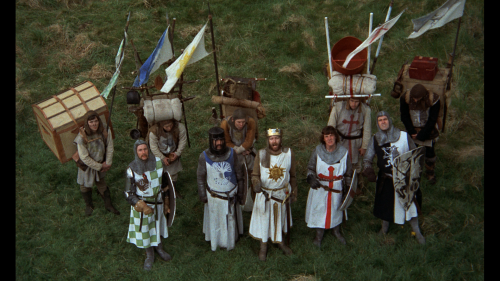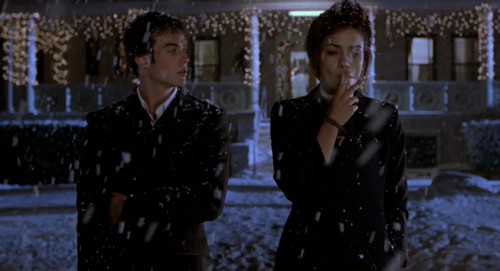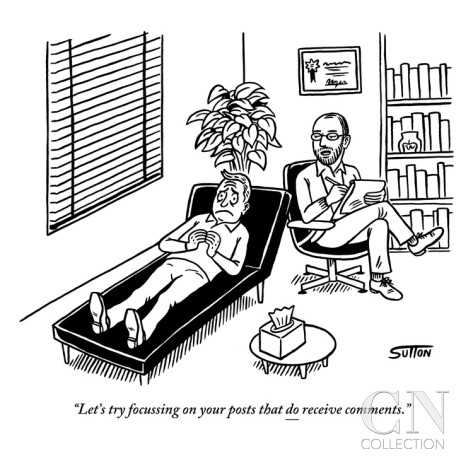
 I’ve always been fascinated with myths—Medusa, Hercules, Big Foot, Blackbeard—these ancient fables provided some magic and mystery to my fairly ordinary adolescence. However, in recent years, I’ve added something else to my list of legends. Now belonging to “The Stuff of Yore,” I have begun to include the storied myth of “Casual Dating.”
I’ve always been fascinated with myths—Medusa, Hercules, Big Foot, Blackbeard—these ancient fables provided some magic and mystery to my fairly ordinary adolescence. However, in recent years, I’ve added something else to my list of legends. Now belonging to “The Stuff of Yore,” I have begun to include the storied myth of “Casual Dating.”
To explain, let me add that I also just finished Aziz Ansari and Eric Klinenberg’s Modern Romance, a hilarious examination of today’s “world of love.” Aziz’s conjectures on the interplay of smart phones, computers, and romance are accurate in so many ways, exhibiting the complicated nuances we must now interpret when communicating with a romantic interest—or a romantic disinterest, for that matter—while using technology. I especially related to the book’s conclusions on choice and options and soul mates; the notion that, amongst Millennials in particular, “we all are unique” and “there is always something better around the corner.” These tenets have been dictating my generation’s capricious tendencies for years. [See previous articles written on soul mates and satisfaction maximizing here].
However, I couldn’t help but interpret the second chapter, titled “The Initial Act,” as Joseph Campbell-esque lore, a tale featuring our hero, the man/woman with a love interest, embarking on a quest to succeed in the Special World of Romance. In this section, Ansari explores how the previously commonplace mission of asking someone on a date has become a complex dance; one can now consider the medium of communication, the language of the question, and even already-available information (via Facebook, Instagram, etc) as having underlying implications.
As Aziz tells it, it is possible to defeat the obstacles of miscommunication and anxiety and generally sweaty palms and wind up with a date. From experience, however, this sort of “dating” success would be about as astonishing as Sasquatch calling me up for financial advice. Of course, this is an exaggeration; I have plenty of friends in relationships and have been on dates myself. But holistically speaking, few of these long-term relationships emerged out of casual dating, nor even sobriety, for that matter. (Cue grimace.)
 So while Ansari’s research indicates that the tired hero can emerge victorious from the Underworld of Awkward with—gasp!—an innocent, no-strings-attached agreement to a get-together, I must push back and add, “mostly after college.” On the one hand, Aziz’s dissection of “ask out” texts and calls is both scientific and true and applicable to college students as well, but on the other, it would be naïve to ignore the fact that he recognizes both “dating” and “casual hook ups” as two simultaneous inevitables with very little contradiction. He touches on mind games, the use of grammar in texting, the effect of waiting to respond and the importance of making things personal when reaching out to a “romantic potential,” and like I said, those principles hold true across all ages. But there is something uniquely mystifying when applying these rules to the collegiate world, because like every structured mythical universe, the collegiate world has its rules. Take modern social interactions, which have already been confounded by a technological reality that we can’t physically experience. Now add cutthroat extremism, blossoming individuality, newfound liberation and, of course, the median age for the peak of the libido; this all converges at once for students on college campuses across the world.
So while Ansari’s research indicates that the tired hero can emerge victorious from the Underworld of Awkward with—gasp!—an innocent, no-strings-attached agreement to a get-together, I must push back and add, “mostly after college.” On the one hand, Aziz’s dissection of “ask out” texts and calls is both scientific and true and applicable to college students as well, but on the other, it would be naïve to ignore the fact that he recognizes both “dating” and “casual hook ups” as two simultaneous inevitables with very little contradiction. He touches on mind games, the use of grammar in texting, the effect of waiting to respond and the importance of making things personal when reaching out to a “romantic potential,” and like I said, those principles hold true across all ages. But there is something uniquely mystifying when applying these rules to the collegiate world, because like every structured mythical universe, the collegiate world has its rules. Take modern social interactions, which have already been confounded by a technological reality that we can’t physically experience. Now add cutthroat extremism, blossoming individuality, newfound liberation and, of course, the median age for the peak of the libido; this all converges at once for students on college campuses across the world.
Which brings me back to Aziz. While reading “The Initial Ask,” I was consistently reminded of the fact that his focus group primarily belonged to the professional world, young 20 and 30-somethings in cities and towns far removed from the minefield that is university. His findings were all fine and well and true, but at the crux of those findings was the concept of the “relationship as the objective.” Obviously, there is the opposite of this objective, in which Person A is trying to avoid or reject Person B, and the formula applies there too. But Aziz makes use of online dating statistics, forums, and random sample responses that reflect the practices an age or focus group living more or less professional lives. These young professionals can longer meet people in an enclosed space like the university campus and expect for that encounter to be a repeat event. They may have a variety of venues at their disposal: bars, work, parties, online, et al, but aside from work, it is less likely that those same “young professionals” will gather in those same bars/parties every single weekend.
College students, on the other hand, are continually going to parties and organized events with people—similarly ranging between 18-22—whom they will probably see again and want to see again. This leaves ample room for the blasé “oh, I’ll see them around,” exempting either party from really having to “put themselves out there.” Furthermore, the “relationship” is the objective for Aziz’s group. People want to settle down, to find companionship, to find a partner. Meanwhile, seventeen and eighteen-year olds across the country step onto their respective campuses for the first time and something similar to a Pause function interrupts the notion of this same objective.
These students are free to do as they please, encouraged to understand themselves as unique individuals, and urged to fully engage in the life of their campuses. The frequent result: freshmen conform to the same lifestyle already prominent amongst the older students, and older students perpetuate a lifestyle they were ushered into their first year: “hooking up.” This is not to say that 18-22 year olds are not looking for companionship too, but the probability of this sample group openly admitting to the “relationship as objective”—at least right away—is as likely as a senior answering the question “where will you be next year?” by comfortably holding up a cardboard box and shouting, “got my home right here, baby!”
None of these assertions are, truthfully, anything new. One simple search on Google yields endless results expounding on this new-aged phenomenon, or “hooking up,” but for the most part, these analysts and social scientists hold both the cultural and sexual revolutions of the 20th century responsible. The bi-product phenomenon, or the “who can care the least” effect is a factor of this “casual” understanding of sex in that casual sex is meant to be just that: blithe, easy, and noncommittal. Why, then, is casual dating not seen in the same light? Blithe, easy, noncommittal; a date could be as simple as a cup of coffee. I drink coffee with my great-aunt, for goodness sakes! And yet, Aziz really captures the issue in saying,
Asking someone out on a date is a simple task that frequently becomes a terrifying conundrum of fear, self-doubt, and anxiety. It’s full of tough decisions: How do I ask? In person? Phone call? Text? What do I say? Could this person be the person I end up spending the rest of my life with? What if this is he only person for me? What if I fuck it all up with the wrong message?
Now consider the aforementioned rules of this mythical collegiate world: it consists of libidinous extremists hell-bent on maintaining their own liberation and individualism within a brief four years. Our Hero Seeking Love, well, he/she is no longer simply “searching for a companion.” Our hero must do so quietly, timidly, riding on an innate fear of failure and rejection born out of the laws of the college universe. That same fear, one that often has more catastrophic results like suicide, tells us that we are special, rare, distinctive individuals, yet to acknowledge unsolicited romantic interest is to lay all of those special and rare qualities on the table and say, “take it or leave it”. “Casual hook ups” eliminate the possibility for rejection because, whether or not such an event does result in a relationship, a relationship was “never the objective” to begin with. Neither party conceded to desiring companionship; neither party made themselves, their personality, their interests, or their ambitions, subject to a rebuff from another.
Finally, I must stress that while this pattern is not completely universal, it has become increasingly accepted and normalized. I’ve encountered many college students who will accept nothing less than an honest first date, however, those individuals challenge the norm. For most, challenging this norm produces trepidation: acknowledging attraction or emotional attachment could result in blatant dismissal, and this dismissal is of the person himself or herself. In modern romance, rejection is the ultimate defeat because it implies that the Hero Seeking Love just is not good enough. As a result, a bubble of collegiate heroes have abandoned the quest before even accepting the undertaking; our fear is colossal, personal, and petrifying, and as a result, many of us engage in quasi-relationships that hover on the surface, avoiding the depth beneath in case our first attempt at ‘diving’ deeper is spurned.

COMMENTS
Leave a Reply














